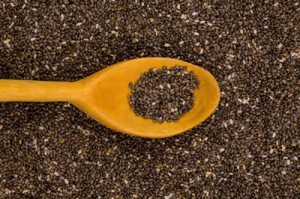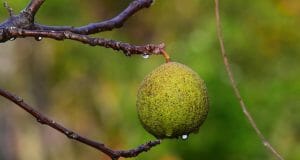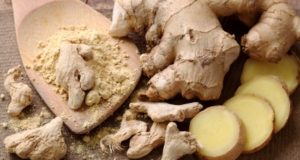There are over 5,000 known varieties of the potato, but today we eat less than a dozen of them. There are over 15,000 varieties of beans in existence, but you’ll find only five or six of them at your grocery store. Ever hear of a banana melon? Most people haven’t, and you won’t see them in stores. Yet they were once a prized melon, widely sought after.
Over the past few hundred years, we’ve seen many changes to our way of life. But perhaps the most profound change of all is to our diet. The typical diet of a hunter-gatherer consisted of over 100 different plants and animals. Today, 70% of our diet consists of just four crop species: wheat, corn, rice, and barley. We eat only about twenty plant varieties in total. And we depend on just five animals (cattle, pigs, goats, sheep, and chickens) for our primary protein sources.
 Literally thousands of crop varieties have fallen into obscurity and been forgotten—not because they weren’t nutritious or delicious (which they were), but because they weren’t easily adapted to factory farming. Modern growers select only those plants that are easy to grow, harvest, and transport using industrial farming methods. (And that’s a big reason why so many of us suffer from chronic lifestyle diseases.)
Literally thousands of crop varieties have fallen into obscurity and been forgotten—not because they weren’t nutritious or delicious (which they were), but because they weren’t easily adapted to factory farming. Modern growers select only those plants that are easy to grow, harvest, and transport using industrial farming methods. (And that’s a big reason why so many of us suffer from chronic lifestyle diseases.)
Growers don’t one day deliberately decide, “Let’s decrease the variety of plants available to people and winnow it down to just a few.” They don’t say, “Let’s wipe out this crop.”
Except for one occasion… 500 years ago.
Today, any student of history knows the name Hernando Cortez. Cortez was the man responsible for conquering one of the greatest civilizations of all time, the Aztecs.
When Cortez set foot in what is now Mexico in 1519, with just 500 Spanish conquistadors, thirteen horses, and a few cannons at his disposal, he faced an Aztec population of about eleven million. What he found astonished him. The Aztecs had created one of the most advanced civilizations on the planet. The culture was vigorous and sophisticated with a complex social order, splendid feats of architecture, a rich arts tradition, robust commerce, and a strong military.
Aztec warriors were formidable. They were prime human specimens and in far better condition than their European counterparts. Lean, well-muscled, and renowned for their strength and endurance, they could march for days without stopping to rest.
How did they keep going?
It was all in the fuel.
The Aztecs grew four staple crops. Three of them remain widespread today: corn, beans, and amaranth.
The fourth staple crop was warrior’s food, a superfood so compact, so nutrient-dense, and so lightweight that they carried it with them wherever they went. Warriors wore a pouch at their waist filled with several days’ worth of this superfood. They stopped only for an occasional drink of water. Otherwise, they didn’t need to slow down (much less stop), eating a small handful of this superfood two or three times a day while on the march.
The superfood was chia seed, from the native plant salvica hispanica.
The Aztec empire was built on chia. Chia was (and still is) the perfect package of protein, healthy fats, vitamins, minerals, and fiber. Chia was eaten whole, ground into flour, made into drinks, applied medicinally, and offered to the gods. Their chia crop was second only to their corn and beans.
According to James Scheer, author of The Magic of Chia, “royal planters of Aztec emperors grew precious chia seeds in ‘floating gardens’ surrounding their capitol city of Tenochitlan.” The Aztecs grew many of their flowers and foods on rafts covered with dirt that floated on a shallow lake.
When Cortez saw how important chia was to the Aztecs, he knew if he could take it away from them, he could topple them. So he ordered every chia field in the Aztec empire to be burned. He shipped chia plants back to Spain, but the Spanish people refused to cultivate it or appreciate its nutritional qualities.
By 1521, the Aztec empire had crumbled. As a cultivated crop, chia was all but forgotten for nearly half a millennium.
Forgotten, But Not Extinct
Cortez couldn’t burn it all, however. Chia continued to grow wild, high in the mountains and in wilderness areas that were difficult to reach. It was through the descendants of the Aztecs, the Tarahumara Indians (a remote mountain tribe in northern Mexico) that chia was rediscovered.
The Tarahumara Indians have become known as legendary runners, and their long-distance running prowess was something that modern-day runners wanted to duplicate. In fact, the Tarahumara name for themselves, Rarámuri, means “runners on foot” or “those who run fast.”
We can surmise that this comes as a result of the chia in their diets, but what is it about chia that is so healthy for people?
A Nutritional Powerhouse…
When it comes to nutrition, chia is truly the total package. Each ounce of chia contains 4.4 grams of complete protein, 11 grams of fiber, and a variety of vitamins, minerals, and omega-3 fats. None of the usually touted omega-3 rich foods (such as walnuts, flax seeds, or salmon) have near the abundance as chia does. And while the healthiest populations of people eat plenty of omega-3 fats, today’s Americans get most of their fats from foods that are high in omega-6s, from those staple crops we mentioned before such as wheat, barley, corn, and rice.
The proper ratio of omega-6 fats to omega-3 fats is around 2:1. However, in our society our omega fat intake is horribly out of proportion – more like 20:1 omega-6 fats to omega-3. And research has shown that excessive levels of certain omega-6 fats (relative to omega-3s) probably increase the chance of a number of illnesses.
This skewed intake is associated with heart attacks, stroke, arrhythmia, arthritis, osteoporosis, inflammation, obesity, cancer, and mood disorders. In fact, many of the drugs used to treat these conditions work by blocking the action of certain omega-6 fats!
Because initial research indicated that omega-6 fatty acids helped support skin health (the largest organ in the human body), kidney function, and pregnancy health, most research was concentrated on these fats. It was only several decades ago that researchers discovered the diseases an overabundance of omega-6s could cause, and their attention began to divert to omega-3s.
High levels of omega-3s seem to reduce the risk of coronary heart disease. Research has shown that when omega-3s are ingested in the proper proportions, there is a reduction in triglycerides, heart rate, blood pressure, and hardening of the arteries (or atherosclerosis).
In addition, omega-3s have an effect on brain health, providing the nutrition needed to protect your nervous system. While the United States government does not agree with this assessment, the Canadian government has recognized the importance of the omega-3 fat DHA in the normal development of the brain, eyes, and nerves. Perhaps the FDA will soon follow suit.
But How Do You Eat It?
When it comes to incorporating chia into your diet, you’re only limited by your imagination. Chia is more than ninety percent water when prepared. It resembles tapioca and blends well with other foods. For instance:
- Chia gel (made by mixing one part chia with nine parts water) is a great way to control your calorie intake. Chia gel can be added to all kinds of foods without compromising the flavor. It helps extend the food and displace calories. The gel’s smooth texture and mild flavor makes it virtually unnoticeable.
- It can be added to dips, milkshakes, puddings, yogurts, peanut butter, and almost any dessert to reduce the total calories you consume. Its soluble fiber acts as a barrier between simple carbohydrates and your digestive system, slowing down absorption, and ensuring that sugars and carbs are slowly and steadily available for energy. It can help you avoid those sugar spikes and sugar crashes.
- You can sprinkle it over your cereal, or grind the seeds and mix it into your flour for baking. Because chia is shelf-stable and requires no refrigeration, it’s the perfect survival food. Kept in a cool, dark place, chia will easily last for several years.
Because of chia’s ability to absorb more than twelve times its weight in water, it’s the perfect food for maintaining hydration and electrolyte balance in the body, especially during physical exertion.
There are several varieties of chia seed on the market, but the one most recommended (and the variety those Tarahumara Indians eat) is salvica hispanica. If you’re interested in purchasing chia seed, click here for a site that is highly recommended, not just for the quality of seed that they provide, but for the competitive pricing as well.
 Off The Grid News Better Ideas For Off The Grid Living
Off The Grid News Better Ideas For Off The Grid Living



